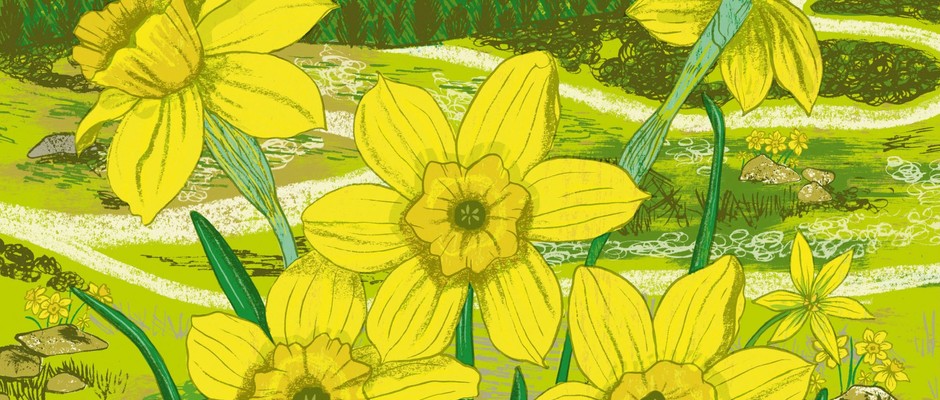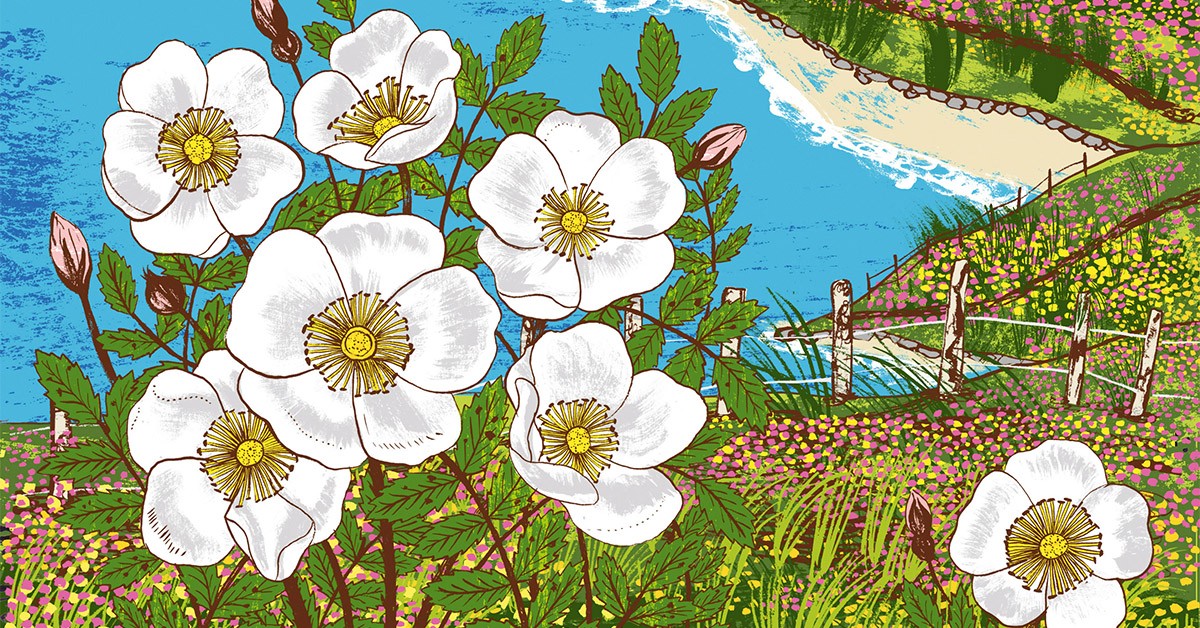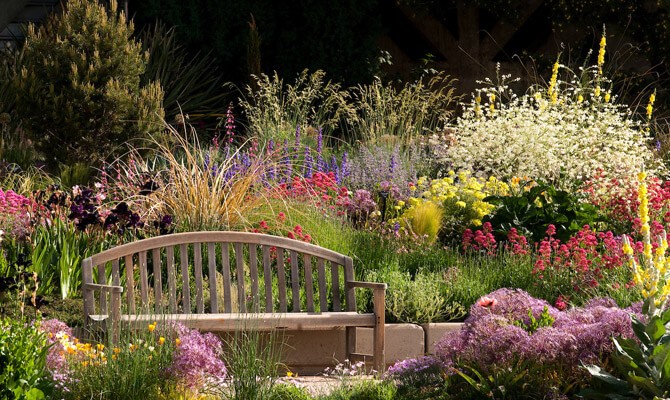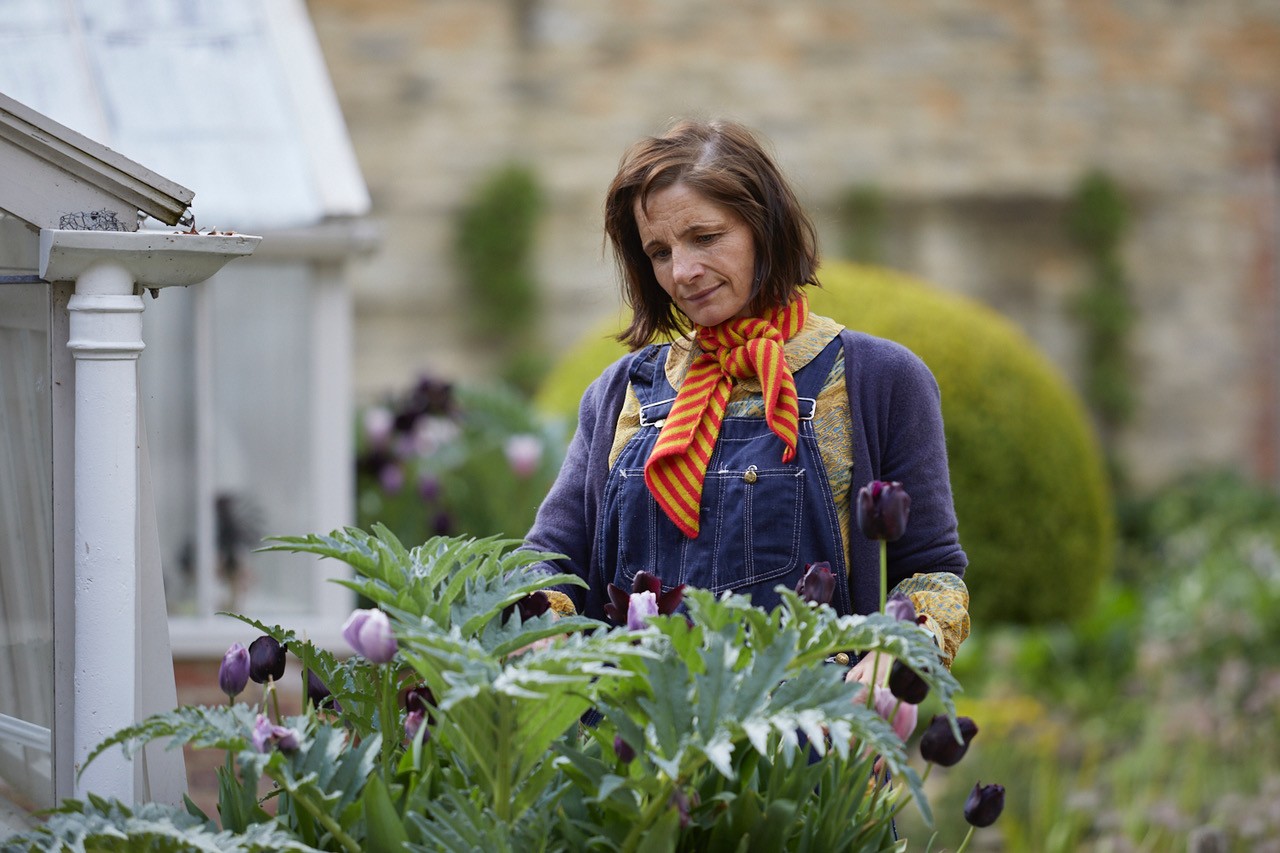
Visit Sierra de Guadarrama mountains for wild daffodils
The Sierra de Guadarrama mountains are home to more than 1,280 plant species, including wild daffodils and a pretty, fragrant shrub. Illustration by Alice Pattullo
The Sistema Central is the most extensive chain of mountains on the Iberian Peninsula. It’s composed of a series of adjoining mountain ranges running roughly southwest-northeast with an overall length of 600km. The Sierra de Guadarrama mountains rise dramatically from the wide, dusty plateau of central Spain, and stretch for 80km to meet the Sierra de Gredos in the east and are easily reached from Madrid in just under an hour. During the 1920s the Peñalara Mountain Climbing Society proposed that the Sierra de Guadarrama range be declared a national park, and this was finally realised in 2013. The bedrock of much of this biodiverse range is water-retentive granite that forms acidic soils. Altogether there are more than 1,280 different species recorded in Sierra de Guadarrama and in late spring, fragrant lavender, narcissi, cistus and crocus perfume the air.

Inspiration for the trip to Sierra de Guadarrama
The sunny disposition of wild daffodils enchants me, and Narcissus rupicola was on my radar.
When to go to Sierra de Guadarrama
The peak season for spring flowering is from early April until early June. There is a further flush of flowers in the autumn.
Where to go
Many of the Sierra de Guadarrama mountain trailheads are at an elevation of around 1,000m where the rocky slopes are vegetated by native pine forests. Sometimes a smattering of blue or white Hepatica nobilis grow among the needle mulch at their base (Pinus sylvestris grows here in altitudes up to 2,000m). Beyond the forests lie areas of open, shrubby, botanically rich alpine meadow and grazed pastures. Hiking paths in Sierra de Guadarrama lead through copses of Quercus coccifera and Quercus pyrenaica and aromatic matorral shrubland on the lower slopes. The forests conceal still, natural pools edged by smooth expanses of blush-pink granite.
A vivid Judas tree studded with magenta blossom always seems to be somewhere in view. Cistus ladanifer and the more modest Cistus salvifolius and Lavandula stoechas with its crown of translucent bracts aren’t shy in colonising the hillsides. Access is from Manzanares el Real, which has historically been considered the most emblematic village in the northern mountains of Madrid and an historic stopover for cattle drovers. Following small roads and tracks towards Navacerrada you gain altitude and will soon find rocky meadows of alpine grass turf. Narcissus bulbocodium var. graellsii is a tiny, pale and charming hoop-petticoat daffodil that grows here.
In April I also discovered regal stands of Orchis mascula and a scattering of upward-facing, china-blue Scilla bifolia. The clear-pink goblets of Paeonia officinalis are easily spotted, indicating areas with more moisture. To the north of Miraflores de La Sierra there are lovely hiking routes in the ecological area surrounding Puerto de Canencia one of the lower passes in the Sierra de Guadarrama range. This is home to a large population of my holy grail: the deep yellow Narcissus rupicola, which has been known since 1830 and is found at heights above 1,500m. Rupicola means growing in rocky places – an apt description. It has solitary flowers, a shallow corona and rush-like leaves, and was mingling with the yellow Gagea pratensis. Both grow in short turf among rocks. The forest understorey here includes the pale tree heath Erica arborea and yet more yellow flowers on the striking Cytisus scoparius.
Plant to grow at home
Wild populations of the beautiful drought-tolerant shrub Cistus, or sun rose, occur frequently on stony poor soils in the granite hills of the Guadarrama. This genus contrasts fragility (evident in its large silky flowers) with a resilient and robust character. These are pioneer plants, often forming a breathtaking display as they grow in dense colonies across the slopes. Cistus are also naturally promiscuous and hybridisation among different species occurs not infrequently. Oscar Warburg attested to that with his seed collections in Spain at the beginning of the 20th century. He went on to introduce Cistus x aguilari a naturally occurring hybrid. Cistus prefer dry, open ground, although I have also seen them growing at the edge of pine woods. My favourite, and a species I could appreciate on this trip to Sierra de Guadarrama, is Cistus ladanifer, a showy evergreen shrub reaching up to 2m. It has attractive, dark-green lanceolate leaves and is native to rocky places in the western Mediterranean. In warm weather this sensual sun rose exudes a warm, carnal musky aroma, the source of which is a fragrant resin (ladanum) produced in the leaf glands. Spectacular, large, brilliant-white flowers cover the bush during early summer. The base of each petal is usually attractively marked with a deep-burgundy halo around the central cluster of golden stamens. This is a choice shrub for a dry garden. It demands sun and well-drained soil, if in any doubt add plentiful grit when planting. It should then be hardy to -10°C. Cistus ladanifer is intolerant of alkaline soils, while Cistus. x aguilari is more tolerant of a range of pHs. Plant with drifts of Lavandula stoechas and perhaps Euphorbia characias subsp. wulfenii.
Guides and maps
Flowers of South-West Europe
by Oleg Polunin
(Oxford University Press, 1997)
Narcissus A Guide to Wild Daffodils
by John W Blanchard
(Alpine Garden Society, 1990)
Where to stay
Eurostars Convento Capuchinos Plazuela Capuchinos 2, 40001 Segovia, Spain. Tel +34 921 41 52 50, eurostarshotels.com
Located in a former monastery in Segovia old town, beside Plaza Mayor and the cathedral.
Hotel Rural La Pedriza Calle del Urumea 10-12, 28410 Manzanares el Real, Spain. Tel +34 911 66 61 20, ruralpedriza.com
A small hotel with elegant rooms and a seasonal outdoor swimming pool.
Hannah Gardner is leading our exclusive reader tour to explore Japan’s hidden garden gems in 2023. Book here.
Authors
Hannah Gardner is a Kew trained head gardener with twenty years experience based near Bath. Hannah founded her design studio New British Landscapes in 2010 and became a freelance consultant specialising in sustainable and organic horticulture in 2021. She pursues interests in travel, design, writing, consultancy, plantsmanship and practical horticulture.

Niwaki bundle worth £57 when you subscribe
Subscribe to Gardens Illustrated magazine and claim your Niwaki bundle worth £57
*UK only

Container Gardening Special Edition
The Gardens Illustrated Guide to Container Gardening.
In this special edition, discover colourful flower combinations and seasonal planting schemes for pots designed by leading plantspeople, and essential know-how for container gardening success. Just £9.99 inc UK p&pBy entering your details, you are agreeing to our terms and conditions and privacy policy. You can unsubscribe at any time.

Gardens of the Globe
From botanical wonders in Australia to tranquil havens closer to home in Ireland, let this guide help you to discover some of the most glorious gardens around the world
By entering your details, you are agreeing to our terms and conditions and privacy policy. You can unsubscribe at any time.





